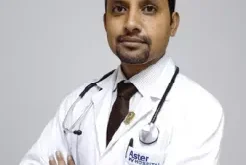Despite the tremendous medical progress, we have achieved, one truth that continues to challenge our healthcare system – early detection saves lives, but not everyone gets the chance to be screened in time. In India’s underserved and remote regions, barriers such as financial constraints, limited infrastructure, and lack of awareness still prevent several people from accessing timely cancer screening. The result? Late-stage diagnoses, higher treatment costs, and reduced chances of survival.
As someone who has worked closely in the field of oncology outreach, we have witnessed how these barriers shape the cancer care landscape. Fortunately, change is possible – and it’s already begun. But to truly make screening accessible to every individual, no matter where they live, we must rethink how we deliver healthcare at the grassroots level.
The unequal fight against Cancer
Imagine a woman in a small village in Odisha or a farmer in rural Maharashtra. They may never have heard of mammograms or colonoscopies. For them, hospitals are hours away, and even a simple check-up means losing a day’s wages. This everyday reality makes preventive health checks feel like a luxury rather than a necessity.
According to various health studies, cancer patients in India are diagnosed at advanced stages, when treatment is more complex and expensive. The reasons go beyond medical availability, they stem from social, financial, and cultural divides.
-
Financial barriers: Many families prioritize daily needs over preventive healthcare. A screening test costing even a few hundred rupees can seem unaffordable when it competes with food or school expenses.
-
Geographic challenges: Rural and tribal belts often lack diagnostic centres. Even when facilities exist, traveling long distances without reliable transport becomes a deterrent.
-
Awareness gaps: The stigma and fear surrounding cancer persist. People still believe that a diagnosis is a death sentence, making them avoid screening altogether.
Bringing screening closer to the people
One of the most effective solutions lies in decentralizing cancer screening. Instead of expecting people to come to hospitals, healthcare providers and policymakers are finding ways to provide screening facilities to them. Mobile screening vans equipped with digital mammography and cervical screening tools are already reaching smaller towns. These units not only perform tests but also create awareness through community talks. For many villagers, it’s their first interaction with a trained oncologist or nurse.
Additionally, community health workers are playing a transformative role. By educating families during home visits and organizing local screening camps, they bridge the gap between modern healthcare and rural realities. Their familiarity with local culture and trust within the community make them powerful allies in the fight against cancer.
Making screening Affordable and Inclusive
Affordability remains at the heart of this issue. While India’s Ayushman Bharat scheme and several state-run programs have expanded access to free or subsidized cancer screening, more needs to be done to reach those who fall through the cracks.
Public-private partnerships are emerging as a game changer. Collaborations between hospitals, NGOs, and government bodies help pool resources and expertise. Some healthcare organizations have even adopted subscription-based screening models, low-cost plans that allow individuals to get regular check-ups without a hefty upfront fee.
Equally crucial is digital integration. Telemedicine platforms now enable oncologists in metros to guide screenings in remote centres. AI-based tools are being piloted to read screening results faster, helping rural health workers detect early signs of cancer even in low-resource settings.
Awareness: The first step toward change
No solution can succeed without awareness. Community campaigns, local influencers, and survivor stories are vital to dismantling myths around cancer. When people learn that early detection can turn a potentially fatal disease into a manageable one, fear slowly gives way to empowerment.
Simple, relatable messages can make a difference, informing that a 10-minute screening could save a life, or that treatment success rates increase manifold when cancer is caught early. Schools, panchayats, and local radio stations can all be powerful allies in spreading this message.
A Future without Barriers
If there’s one thing experience has shown, it’s that cancer care is not just about hospitals or doctors – it’s about accessibility, trust, and awareness. Every time a woman gets her first mammogram at a mobile camp, or a farmer learns about oral cancer screening through a local drive, we take a step closer to health equity.
The vision for the future is clear: no one should miss a cancer screening because of where they live or how much they earn. By building collaborative systems that blend technology, compassion, and outreach, India can bridge the gap between urban and rural care.
Because when it comes to saving lives, distance and income should never decide destiny.
DR. R V RAGHUNANDAN, Senior Consultant – Radiation Oncology, HCG Cancer Center
 Newspatrolling.com News cum Content Syndication Portal Online
Newspatrolling.com News cum Content Syndication Portal Online






